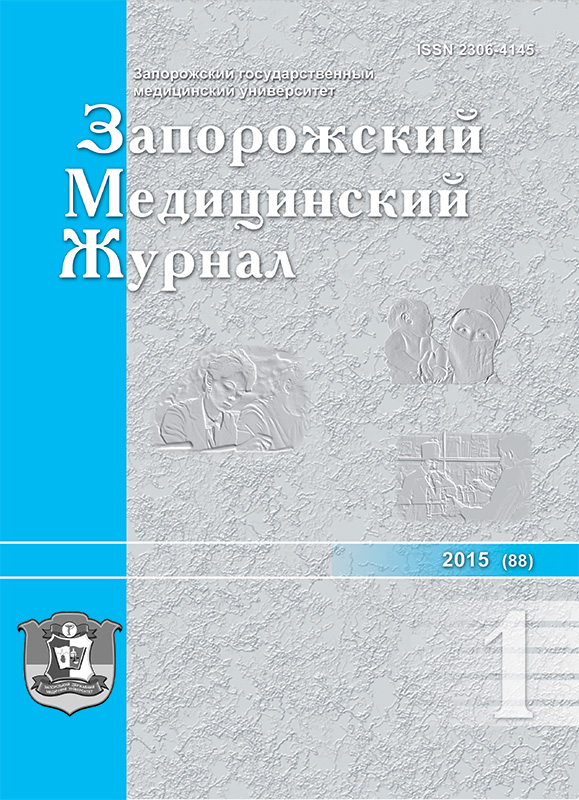Informativeness of anamnestic data in children with seasonal symptoms of mold allergy
DOI:
https://doi.org/10.14739/2310-1210.2015.1.39239Keywords:
Seasonal Allergy, Asthma, Child, DiagnosisAbstract
Aim. The results of clinical, anamnestic study of 154 children with seasonal symptoms of allergic rhinitis and/or bronchial asthma are declared in this article.
Methods and results. Questionnaire survey was done with further estimation of sensitivity (S), specificity (Sp), positive and negative prognostic values (±PV), odds ratio (OR) for each question. The regression model was built (ROC-curve) which includes most informative parameters. It was revealed that such questions as presence of symptoms during warm time of year (spring-summer-autumn), presence of visible mold in dwelling, appearance of symptoms after contact with fallen leaves – entered the prognostic model of mold allergy.
Conclusion. They have optimal sensitivity and specificity (Se=47,8%, Sp=89,7%) with area under ROC-curve AUC=0,75.
References
Rebrova, O. Yu. (2006) Statisticheskij analiz medicinskich dannych (primenenie paketa prikladnykh programm Statistica) [Statistical analysis of medical data (application software package stats)]. М. : Меdia Sfera,. – 312 s.
Bergamini, B. M., Grillenzoni, S., Andreoni, A. D. Natali, P, Ranzi, A, & Bertolani, MF. (2004). Alternaria spores at different heights from the ground. Allergy, 59(7), 746–752.
Atkinson, R. W., & Strachan, D. P. (2006) Temporal associations between daily counts of fungal spores and asthma exacerbations. Occupational and Environmental Medicine., 63, 580–590. doi: 10.1136/oem.2005.024448.
Simon-Nobbe, B., Denk, U., Pöll, V., Rid, R., & Breitenbach, M. (2008) Birgit Simon-Nobbe The Spectrum of Fungal Allergy. Int. Arch. Allergy Immunology, 145, 58–86.
Bush, R. K., Portnoy, J. M., Saxon, A., Terr, A. I., & Wood, R. A. (2006) The medical effects of mold exposure. J. Allergy Clinical Immunology, 117, 326–333. doi: http://dx.doi.org/10.1016/j.jaci.2005.12.001
García-Marcos, L., Carvajal Urueña, I., Escribano Montaner, A., Fernández Benítez, M., García de la Rubia, S., et al. (2007) Seasons and other factors affecting the quality of life of asthmatic children. J. Investig. Allergol. Clin. Immunol., 17(4), 249–256.
Grundstein, A., & Ebelt Sarnat, St. (2008) Meteorological Mechanisms Explaining Thunderstorm-Related Asthma. Geography Compass, 3(1), 45–63. doi: 10.1111/j.1749-8198.2008.00195.x.
Lipiec, A. & Samolinski, B. (2002) Alternaria sensitization in patients with allergic rhinitis. Materials of the congress of the Europ. Academy of allergology and clinical Immunology, 57, 288.
Newson, R., Strachan, D, Corden, J., & Millington, W. (2000) Fungal and other spore counts as predictors of admissions for asthma in the Trent region. Occupational and Environmental Medicine., 57, 786–792.
Walls, R. S., Heddle, R. J., Mimi, T.L.K., et al. (2005) Optimising the management of allergic rhinitis: an Australian perspective. Med. J. of Australia, 182(1), 28–33.
Fan, J., Upadhye, S., Worster, A. (2006) Understanding receiver operating characteristic (ROC) curves. Can J Emerg Med, 8(1), 19–20.
Downloads
How to Cite
Issue
Section
License
Authors who publish with this journal agree to the following terms:
Authors retain copyright and grant the journal right of first publication with the work simultaneously licensed under a Creative Commons Attribution License that allows others to share the work with an acknowledgement of the work's authorship and initial publication in this journal. 
Authors are able to enter into separate, additional contractual arrangements for the non-exclusive distribution of the journal's published version of the work (e.g., post it to an institutional repository or publish it in a book), with an acknowledgement of its initial publication in this journal.
Authors are permitted and encouraged to post their work online (e.g., in institutional repositories or on their website) prior to and during the submission process, as it can lead to productive exchanges, as well as earlier and greater citation of published work (See The Effect of Open Access)

